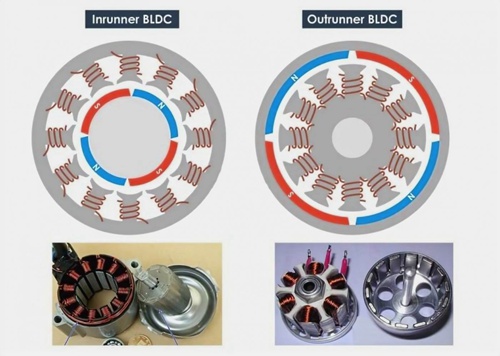Bldc motor specifications about motor selection
Brushless motors are widely used in various industries, from robotic to aerospace engineering. When selecting a brushless motor, it is crucial to understand its specifications to ensure that it fits your application requirements. In this article, we will discuss some essential bldc motor specifications that you should be familiar with.
Motor Specifications
A brushless motor factory often has various brushless motor models represented by several digit number, while for different brushless motor manufacturers, the numbers mean differently. For example, ICAN company’s brushless motor 42BLF-0330NBB. 42 means flange size, which is 42mm. 03 means power, which is 3*10=30watt. 30 means rate speed, which is 30*100=3000rpm.
No-load Current
The working current of the motor without load at a specified voltage.
Torque
The driving force generated by the rotor in the motor that can drive mechanical loads.
KV Value
The value of speed per volt. kv*voltage=speed(rpm)
Rotor Structure
Brushless motors have type of external rotor and internal rotor. An brushless inrunner motor has a stationary outer casing and a rotating rotor inside, with a permanent magnet on the rotor and electromagnets on the stator. An brushless outrunner motor has a stationary inner core and a rotating casing around it, with electromagnets on the rotor and a permanent magnet on the stator.
Speed
The rotational speed of the brushless motor per minute. The speed*torque=power*10. So, when it’s under certain power, when the speed is decreased, the torque is increased. It is impossible to expect a motor to have both high speed and high torque.
Operating Temperature Range
In many special application industries, there are very clear requirements for the working temperature of the brushless motor, such as high-temperature environments and low-temperature scenarios. Generally, the working temperature range of brushless motors is between -20 to +100 degrees, and more stringent ranges are between -40 to +140 degrees. Therefore, customers who are sensitive to temperature parameters need to pay special attention to this.
Waterproof Rating
The protection level of the motor is generally indicated by IP followed by a number. Customers who use the motor in a water environment should pay attention to this value. Generally, if the brushless motor does not explicitly state that it is a waterproof motor, then it is not. You can focus on the number after IP, which means that the higher the number, the higher the waterproof rating.
In conclusion, brushless motors come in various sizes, configurations, and specifications. Understanding their specifications is crucial in selecting the right motor for your application. By knowing the motor’s KV value, torque, rotor structure, and other specifications, you can determine its performance capabilities and ensure it is compatible with your application’s needs.



